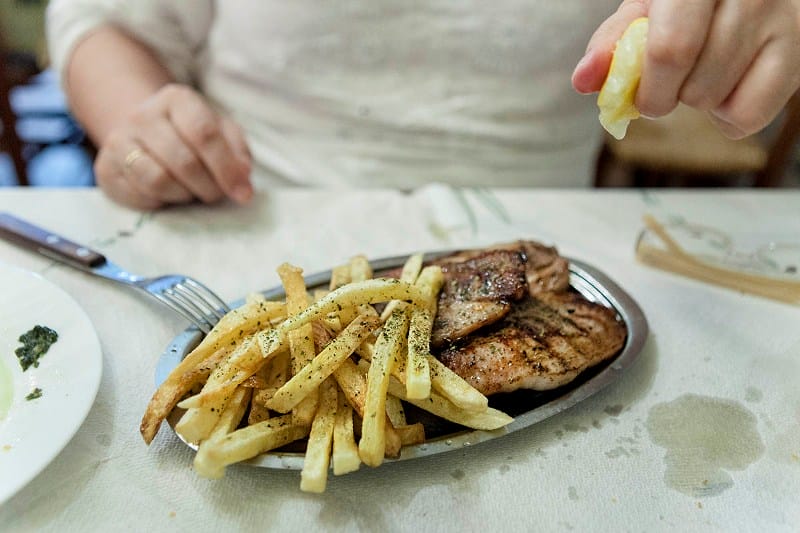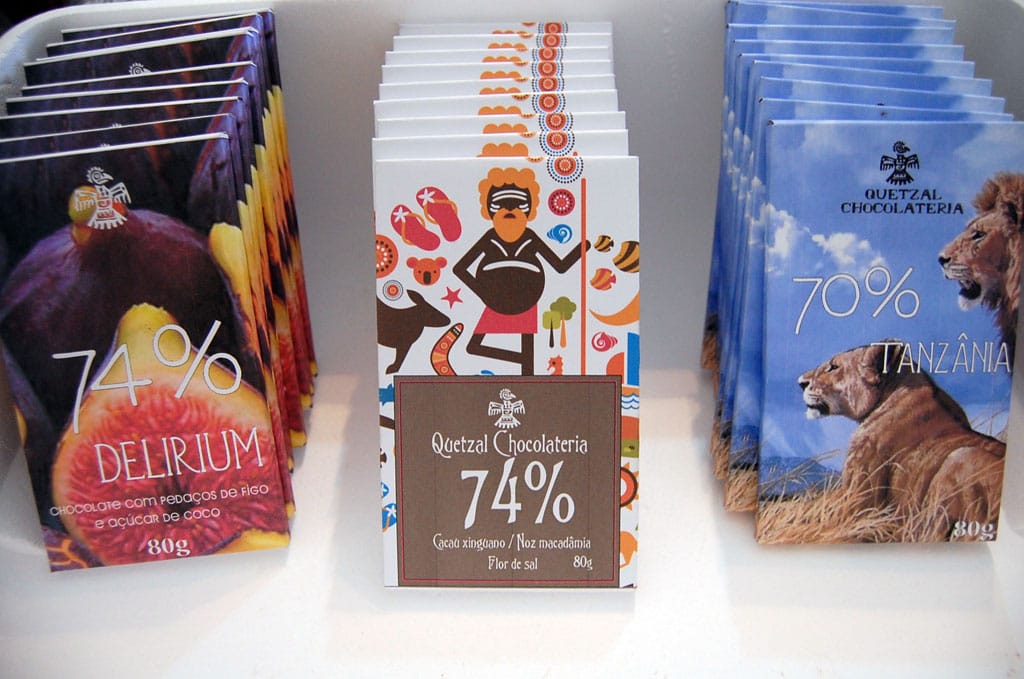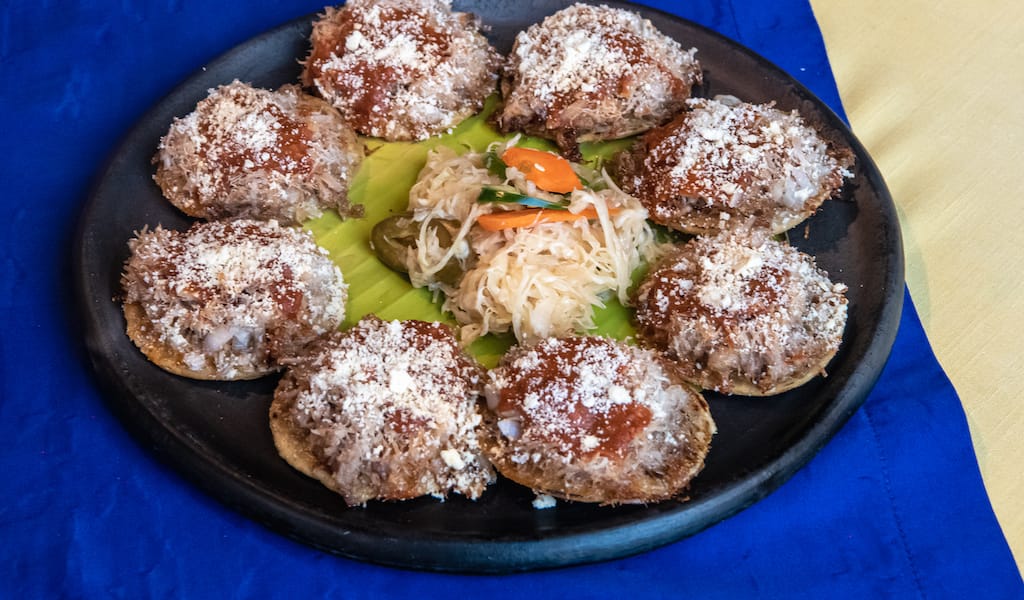For the average visitor to Athens, the culinary scene remains captive to a number of clichés. The cobblestone streets of Plaka are still lined with tavernas and restaurants ready to cater to a rather outdated and make-believe idea of Greek eating: drinking retsina and eating moussaka under the moonlit Parthenon with the occasional bouzouki playing in the background, or going for souvlaki (the most famous Greek street food) near Monastiraki Square among a throng of tourists. These experiences are, unfortunately, still the norm for the majority of travelers to Athens.
True Greek cooking is hard to define. Athens is a cramped city that accounts for more than 40% of the Greek population. Most people have parents or grandparents from another region of Greece and more often than not, these families brought their recipes and cooking with them when they moved to Athens. On the one hand, you find the light, airy dishes of the Mediterranean – vegetables, olive oil, legumes and boiled wild herbs – and on the other, the strong Turkish and Asia Minor influences from the refugees who came from Istanbul and Anatolia in the 1920s, ’50s and ’60s.
The Athens eating scene has had to adapt to many changes and trends in the past 15 years. Though the traditional taverna has never gone out of fashion, the 1990s and ’00s were a period of great discovery in the local culinary scene. The ’90s saw a minimalist, European style of cooking associated with the rise in the standard of living and the boom days of the Athens Stock Exchange. Prices went up as the Athens restaurant industry tried to build the image of a European capital that followed international dining trends. The first Michelin stars were awarded to Greek restaurants during that period.
Since the end of the first decade of the millennium, there has been a definite shift in the public mood. Having at heart never fully embraced any other food except the one served by their mothers and grandmothers, Greeks went back to their roots. The first contemporary tavernas opened with great success, offering a modern spin on the traditional, old-fashioned, smoke-filled venues of the past, while creative Greek cooking became a new trend. The healthy alternative represented by Cretan cuisine – high in olive oil and based on fresh ingredients, legumes and barley rusk – came back in style with a vengeance. (Greece’s largest island, Crete claims the country’s highest life expectancy.)
The financial crisis has intensified this return to traditional eating. The humble yet delicious souvlaki is back in fashion for good, and often offered very cheaply. Bakeries in Athens serve a dizzying array of savory pies that are definitely worth a try, from spanakopita (spinach pie) and peinirli (another Asia Minor influence) to cheese pies with all sorts of cheeses. The latest food craze in Athens is frozen Greek-style yogurt. Frozen yogurt bars are springing up like mushrooms around the city. The taste is a bit like ice cream but with more character and flavor. Tavernas offer tapas-style appetizers and then main courses, and the Athenian custom is to order plenty of appetizers to share around. It’s important to remember that a lot of old-school diners are only open during lunchtime, but it’s worth the effort to visit these places, where you’re most likely to experience real, old-fashioned Athenian-style eating.
The Greek capital is easy to navigate by foot or the metro; the upside of being a traveler in a country that lives on tourism is that most locals speak English and they are usually happy to help. Beware of restaurant opening and closing times, as Athenians eat late lunches and dinners. Most places open for lunch at 1 p.m., although most locals don’t eat lunch until 2 or 3:00. Dinnertime is very late even by South European standards: Athenians usually go out for dinner after 9 p.m. and most restaurants serve food up to 11 p.m. or midnight. And if there’s one last piece of culinary advice for Athens, it’s this: Avoid the touristy Plaka area around the Acropolis and instead explore the downtown area where the locals eat. You will not be disappointed.
 June 7, 2016 Quetzal
June 7, 2016 Quetzal
As an electrician in the Galeão international airport, Emerson Gama responded to […] Posted in Rio December 26, 2023 Best Bites 2023: Oaxaca
December 26, 2023 Best Bites 2023: Oaxaca
Culinarily speaking, 2023 was irreverent and loud. It tasted like salty melted cheese, […] Posted in Oaxaca July 10, 2018 Behind Bars
July 10, 2018 Behind Bars
Cumhuriyet Avenue bridges the central Istanbul districts of Beyoğlu and Şişli, and is […] Posted in Istanbul
Published on July 24, 2012
Related stories
Sample Rio's finest chocolate on our Culinary Walk!
June 7, 2016
RioAs an electrician in the Galeão international airport, Emerson Gama responded to emergencies like exploding transformers. But in his spare time, he was becoming a self-made expert on Latin American mythology, tropical ecology and sustainable resource management. These passions led him to quit his job four years ago; since then, Gama has become the Rio…
December 26, 2023
OaxacaCulinarily speaking, 2023 was irreverent and loud. It tasted like salty melted cheese, fried beef, hot sauces, sour lime-flavored water, tropical fruits, and beer – lots of hoppy beer. While Oaxaca’s top restaurants kept it classy and stylish, the groovy craft beer bars, as well as the buzzing market and street food stalls told a…
July 10, 2018
IstanbulCumhuriyet Avenue bridges the central Istanbul districts of Beyoğlu and Şişli, and is flanked on its eastern side by a number of large complexes including the city’s expansive Military Museum, the iconic Hilton and Divan Hotels, a towering officer’s club, and a public theater and convention center. In contrast, its western strip consists of a…
















































































